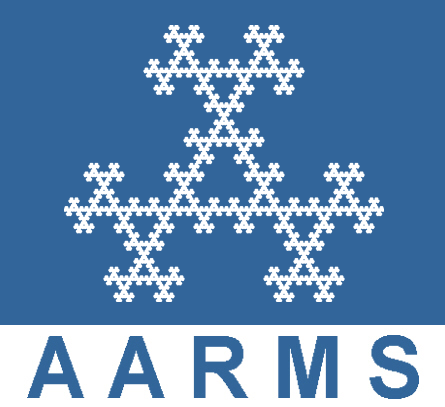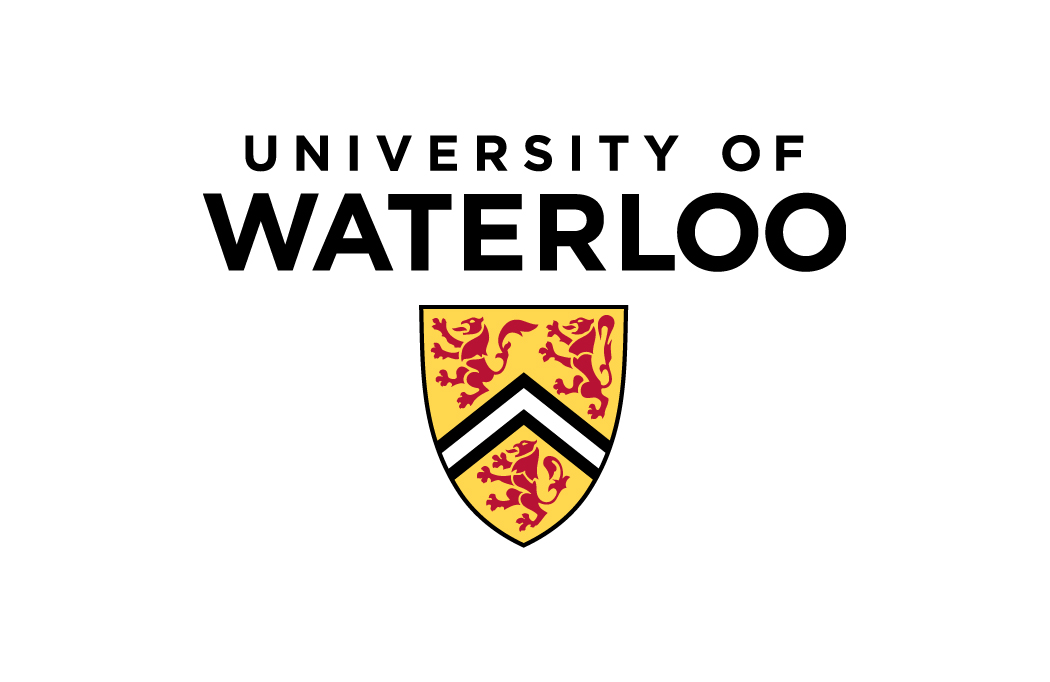2017 CMS Winter Meeting
Waterloo, December 8 - 11, 2017
Org: Adam Clay (University of Manitoba) and Tyrone Ghaswala (University of Waterloo)
[PDF]
- HANS BODEN, McMaster University
Periodic virtual and welded knots and automorphisms of classical knot groups [PDF]
-
Symmetries of classical knots were introduced over 50 years ago by R. Fox, and of special interest are free periods and cyclic periods of a knot. In either case, a symmetric representative of the knot type induces a welded-defined outer automorphism of the knot group. In this talk, I will report on recent joint work with Andy Nicas on the question of whether a classical knot can admit periodic virtual or welded diagrams that are somehow new or different from any of its classical periods. This question is open to interpretation, but one way is to compare the induced automorphisms. We provide an answer, and our proof combines old results of Schreier (for torus knots) and Zimmermann (for non-torus knots).
- COREY BREGMAN, Brandeis University
Outer space, flat tori, and the period mapping [PDF]
-
The period mapping assigns to each marked, rank-$n$ metric graph a positive definite quadratic form. This defines a continuous map from outer space to the space of positive definite quadratic forms. The latter can be identified either with the symmetric space $SL_n(\mathbb{R})/SO_n(\mathbb{R})$, or alternately with the space of marked, flat $n$-dimensional tori. The period mapping is therefore a free group analog of the classical Abel-Jacobi map from Teichmuller space to the Siegel upper half plane. We will discuss what is known about the image of this map and describe the fibers explicitly for all $n$. This is joint work with Neil Fullarton.
- XINGHUA GAO, University of Illinois, Urbana-Champaign
Orderability of Dehn Fillings [PDF]
-
Boyer, Gordon, and Watson conjectured that an irreducible rational homology 3-sphere is not an L-space if and only if its fundamental group is left-orderable. In a recent work, Culler and Dunfield showed how to use $\widetilde{PSL_2(\mathbb{R})}$ representations and the so called translation extension locus to construct orders on intervals of Dehn filling of certain one-cusped 3 manifolds. In this talk, I'll show how to use a similar technique to construct orders on Dehn fillings of some other one-cusped 3 manifolds.
- FUNDA GULTEPE, University of Luxembourg
A distance formula for the outer automorphism group of the free group. [PDF]
-
We will discuss estimating word distance between two geometric outer automorphisms of the free group $Out(F_n)$ using the geometry of the hyperbolic simplicial complexes it acts on.
We will present the construction of the obtained \emph{distance formula} for $Out(F_n)$ through its analogy with the similar formulas for the special linear group and the mapping class group.
This is a joint work with Yulan Qing and Kasra Rafi.
- YING HU, UQAM
Taut foliations, contact structures and left-orderable 3-manifold groups [PDF]
-
Let $M$ be an irreducible $\mathbb{Q}$-homology sphere (i.e. $H_*(M,\mathbb{Q})\cong H_*(S^3,\mathbb{Q})$). The L-space conjecture suggests the following statements are equivalent: a) $\pi_1(M)$ is left-orderable; b) $M$ admits a co-orientable taut foliation; c) $M$ is not a Heegaard Floer L-space. The implication from b) to c) was established and was proven by utilizing a contact structure that is close to a taut foliation.
In this talk, we discuss how contact structures could also play a role in studying the interconnection between the left-orderability of $\pi_1(M)$ and the existence of co-orientable taut foliations on $M$. Following this idea, we confirm the L-space conjecture for cyclic branched covers of families of hyperbolic knots. An important concept occurs in our argument is Fractional Dehn twist coefficients of mapping classes.
This is joint work with Steve Boyer.
- CHRIS LEININGER, University of Illinois
trees and BNS invariants [PDF]
-
For certain free-by-cyclic groups G and components of their BNS-invariants, I will explain how one can canonically associate an R-tree and action of G with that component that captures dynamical information about all associated splittings as a free-by-cyclic group. This is joint work with Dowdall and Kapovich.
- JOHANNA MANGAHAS, University at Buffalo
Right-angled Artin groups as normal subgroups of mapping class groups. [PDF]
-
Free normal subgroups of mapping class groups abound, by the result of Dahmani, Guirardel, and Osin that the normal closure of high powers of pseudo-Anosovs is free. At the other extreme, if a normal subgroup contains a mapping class supported on too small a subsurface, it can never be isomorphic to a right-angled Artin group, by work of Brendle and Margalit. I will talk about a case right in between: a family of normal subgroups isomorphic to non-free right-angled Artin groups. We also recover, expand, and make constructive the result of Dahmani, Guirardel, and Osin about free normal subgroups. We do this by creating a version of their “windmill” construction tailor-made for the projection complexes introduced by Bestvina, Bromberg, and Fujiwara. This is joint work with Matt Clay and Dan Margalit.
- ALAN MCLEAY, University of Glasgow
Mapping class groups, covers, and braids [PDF]
-
The mapping class group of a surface is the group of isotopy classes of boundary preserving homeomorphisms of the surface. Given a finite sheeted covering space between surfaces we may ask what relationship, if any, exists between the mapping class groups of the two surfaces?
In joint work with Tyrone Ghaswala we investigate this question for surfaces with non-empty boundary. In this talk we will discuss a classical theorem of Birman and Hilden and the evaluated Burau representation of braid groups.
- SARAH MOUSLEY, University of Illinois at Urbana-Champaign
Exotic limit sets of Teichmuller geodesic rays [PDF]
-
We will present our result that a geodesic ray in Teichmuller space does not necessarily converge to a unique point in the hierarchically hyperbolic space (HHS) boundary of Teichmuller space. In fact, the limit set of a geodesic ray can be almost anything allowed by topology. This stands in contrast to the situation for Gromov hyperbolic spaces where each geodesic ray converges to a unique point in the HHS boundary (which happens to agree with the Gromov boundary).
- DOUG PARK, University of Waterloo
From automorphisms of Riemann surfaces to 4-manifolds [PDF]
-
I will survey some of the recent works on the geography problem of symplectic 4-manifolds. I will focus on certain families of 4-manifolds which arise from cut-and-paste constructions involving surface bundles. These bundles are cyclic branched covers of cartesian products of 2-manifolds that are branched along graphs of self-diffeomorphisms of 2-manifolds.
- YULAN QING, University of Toronto
Convexity of Balls in the Outer Space [PDF]
-
In this talk we answer questions regarding the strongest convexity properties of geodesics and balls in Outer space equipped with the Lipschitz metric. We introduce a class of geodesics called balanced folding paths and show that, for every loop $\alpha$, the length of $\alpha$ along a balanced folding path is not larger than the maximum of its lengths at the end points. This implies that out-going balls are weakly convex. The applications and conjectures will be discussed as well. This is joint work with Kasra Rafi.
- NICK SALTER, Harvard University
Plane curves and mapping class groups [PDF]
-
A plane curve is nothing more than a polynomial in two variables. Viewed over the complex numbers, this describes a surface, possibly with singularities. When no such singularities are present, the curve is ``smooth'' and describes a special kind of Riemann surface. If one has a *loop* of such smooth plane curves, there is an associated element of the mapping class group; the collection of all such mapping classes is called the ``monodromy group of plane curves''. This talk concerns the basic question: which mapping classes can arise this way? Is the subgroup finite index? I will describe my recent work which gives an essentially complete answer to these questions, and more. The methods involve a combination of geometric group theory and tropical algebraic geometry. Along the way, we will see connections between this problem and some interesting new subgroups of the mapping class group for which many basic questions are not yet answered.
- JENYA SAPIR, SUNY - Binghamton
Tessellations from long geodesics on surfaces [PDF]
-
I will talk about a recent result of Athreya, Lalley, Wroten and myself. Given a hyperbolic surface S, a typical long geodesic arc will divide the surface into many polygons. We give statistics for the geometry of this tessellation as the length of the arc goes to infinity. Along the way, we look at how long geodesic arcs behave in very small balls on the surface.
- BENA TSHISHIKU, Harvard University
Groups with Bowditch boundary a 2-sphere [PDF]
-
Bestvina-Mess showed that the duality properties of a group are encoded in any boundary that gives a $Z$-set compactification; for example, a hyperbolic group with Gromov boundary $S^n$ is a PD($n+1$) group. For relatively hyperbolic pairs $(G,P)$, the natural boundary, the Bowditch boundary, does not give a $Z$-set compactification of $G$. Nevertheless we show that if the Bowditch boundary of $(G,P)$ is $S^2$, then $(G,P)$ is a PD(3) pair. This is joint work with Genevieve Walsh.





